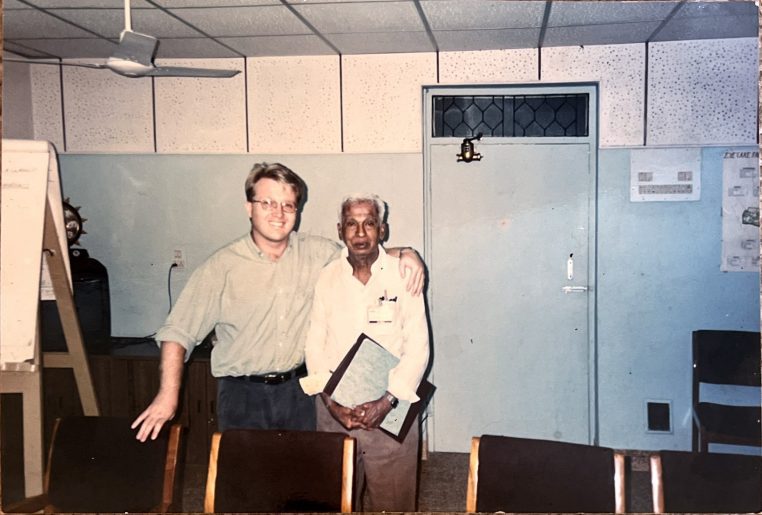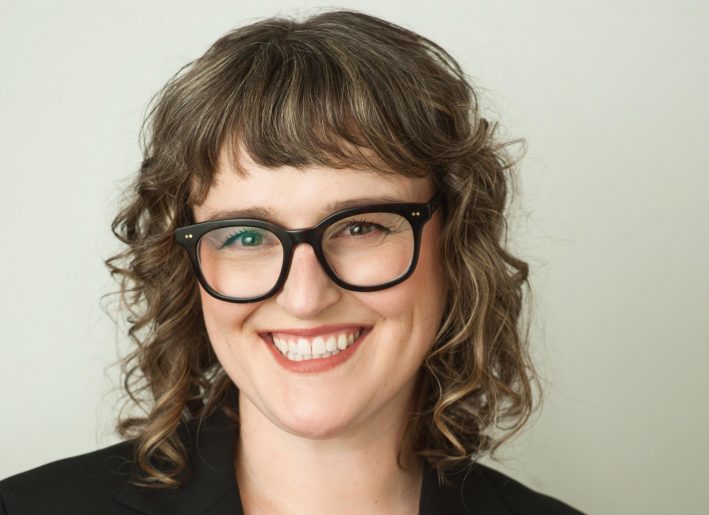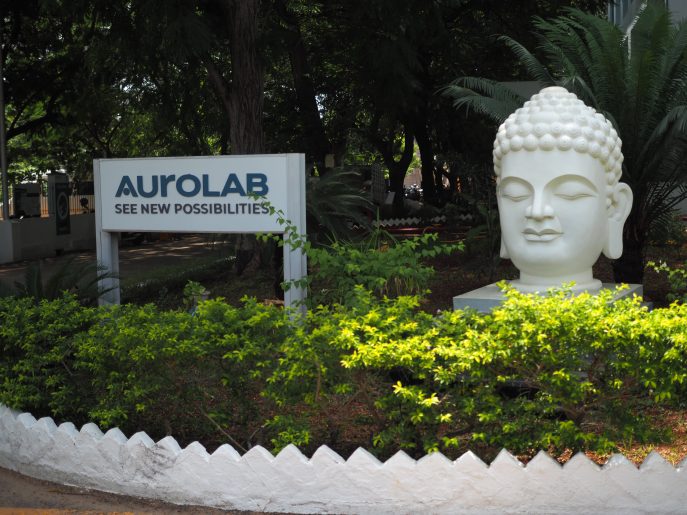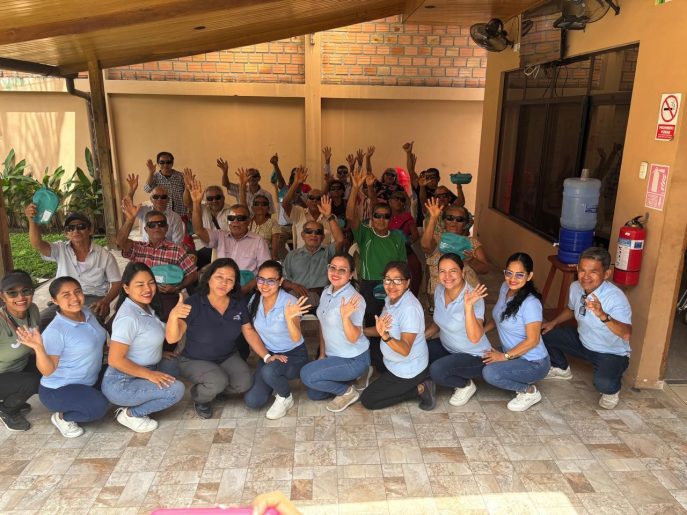On November 16th, 2018 Seva Canada held our Annual General Meeting at VanDusen Botanical Garden. Joining us were Ratana Vann and Dr. Barang Touk from Cambodia and Nyima Yongsam and Dr. Zhengong from our partner program in the Tibetan Areas of China.
Penny Lyons, Executive Director, provided an overview of how Seva Canada’s programs restoring sight and preventing blindness alleviates human suffering and more and more contributes to human capital. Penny explained how and why our programs ensure equity, incorporate innovation and enable sustainability in terms of both human and financial resources.
Penny Lyons, Executive Director, speaking at the AGM
Here’s what Penny had to say:
Equity + Innovation + Sustainability
Equity, innovation, and sustainability – these three words define Seva Canada’s work. But they don’t tell the whole story. The whole story comes at the end of the equation:
Human Capital
Human Capital is the new ‘it’ term of 2018, at least within international development circles. As defined by the World Bank – human capital is the potential of individuals… it is a nation’s greatest asset… and the more human capital that exists within a country the greater the opportunity and prosperity of that country.
So how does this equation; equity + innovation + sustainability = Human Capital…. relate to Seva Canada and the work that you support?
Let’s look at each component of the equation.
Equity
Seva Canada and our partner, the Kilimanjaro Centre for Community Ophthalmology, were the first eye care organizations worldwide to look at gender inequity in the treatment of blindness. Together, we were the first to develop strategies to find a way over, under, around or through the barriers preventing women and girls from getting the eye care they need and deserve.
All Seva Canada supported projects work towards achieving gender equity by focusing on overcoming the cultural and economic barriers women and girls face in accessing eye care. We know that the health of women and girls is foundational to overall public health. We know that when women and girls are given the power of sight and are able to lead healthy, educated and productive lives, entire communities have a chance at a better future. And healthy, educated, productive lives equals human capital.
Nyima Yongsam with daughter, and Dr. Zhengong, from Seva-supported Kham Eye Centre in Dartsedo, China
Innovation
Now let’s look at the second part of the equation – Innovation. Innovation without evidence to prove that it actually works is really nothing more than an interesting idea.
So, we start with a need or a problem – like gender inequity in accessing eye care for example. We define it, so we can understand it, we determine why it exists and then we figure out a way to solve the problem. We implement a solution we think will work (like providing free transportation so women and girls can more easily access care). Then we test the model. In one place we provide free transportation and in another, we don’t. We gather data from our partners and programs and analyze and evaluate it to see if it proves or disproves what we think we know. Based on what we learn, the way we develop a program changes. The last step in the process is to document it, have it reviewed by those who review research, and then publish it, so other eye care programs can benefit from what we have learnt.
Seva Canada and the program partners we fund will not and cannot succeed without implementing systematic interventions that have credible and reliable evidence of effectiveness behind them – meaning that there is strong research to suggest that the interventions we try; produce the expected and desired outcomes. Why? Because neither Seva Canada, nor our partners, have time or money to waste. We simply do not have the resources to make mistakes.
So what kind of innovations am I talking about?
In Cambodia, for example, we trained fieldworkers to identify people who need care and asked them to refer those identified directly to the hospital. Research showed that the model worked, somewhat, but only 50% of patients identified made it to the hospital.
So we tried something else:
We asked fieldworkers to identify people with eye disease but instead of sending the patients to hospital they were sent to an outreach camp. Camp staff then helped the patients get to the hospital. This model costs more because it is a 2 step process, but it also gets more people in for surgery and can generate more income for the hospital because some patients are able to pay for services. So far, this particular model has only been tested in one location but now we will be using these findings to expand to other areas in Cambodia.
Dr. Barang Touk and Ratana Vann from Seva Cambodia
Sustainability
And last in the equation, but not least – Sustainability – and, when we talk about sustainability we are talking in terms of human resources and financial resources – both of which are in short supply in the places where Seva Canada works.
So first, sustainability in terms of human resources.
Our programs are built and managed by international partners.
We train local personnel in everything from clinical skills to program management. We help our partners develop programs that are high-quality, self-sufficient and achieve long-term change. This approach creates jobs and builds internal capacity within a country while ensuring communities are able to provide ongoing eye care for their own populations. Through this approach, trainees become trainers, hospitals become teaching institutions, and the knowledge within the country continues to renew itself. It’s an investment with a ripple effect for generations.
In terms of financial sustainability, Seva Canada is working to create a financially sustainable model of primary eye care through our Community Eye Centre (CEC) initiative. The majority of CECs we have funded are now generating enough income to cover their operating costs including wages, supplies, rent, utilities, marketing and so on. Some of the CECs are generating enough income to propagate other CECs. We will continue to fund the creation of CECs, particularly in Africa and we hope to expand a model whereby the CECs are funded by investors whose investment will ultimately be repaid by revenues generated by the CECs. The first investor funded CEC will be created in 2019.
A second example of financial sustainability is in country revenue generated by our international staff and partners is also important for sustainability. Seva Canada staff and volunteers work closely with programs to improve their in-country marketing – bringing in more patients and therefore more revenue. We also teach fundraising skills so programs can access in country funding sources including multinational companies, individuals, and grants.
Equity + Innovation + Sustainability = Human Capital
Equity, innovation, and sustainability in healthcare require research and solutions that promote health and development and lead to more productive, healthy and fulfilling lives for all.
Very occasionally, that means research and development of new health technologies – like an app on an iPhone. But, much more often, true innovation is in optimizing available services.
Equity, innovation and sustainability are achieved through creative ways to organize and deliver healthcare, manage information, respond to the needs of providers and users, develop business models for increased productivity and sustainability, and ensure that vulnerable and disadvantaged groups become healthier through solutions that promote equity.
Seva Canada’s eye care programs are built on equity, innovation and sustainability – so we must be building human capital. And we are. But people are still poor, health systems are still completely inadequate, and inequality is increasing in many countries. We have to do more.
36 years ago Seva Canada’s founders didn’t say… we want to build human capital.
They said; we want to help people see. Who knew they were going to do both!?
Penny Lyons with program guests from Cambodia and Tibetan Areas of China
The evening would not have been possible without the help of our outstanding volunteers: Becci, Riley, and Merrin. Thank you for your hard work and dedication!
See more photos from the evening here: facebook.com/sevacanada



